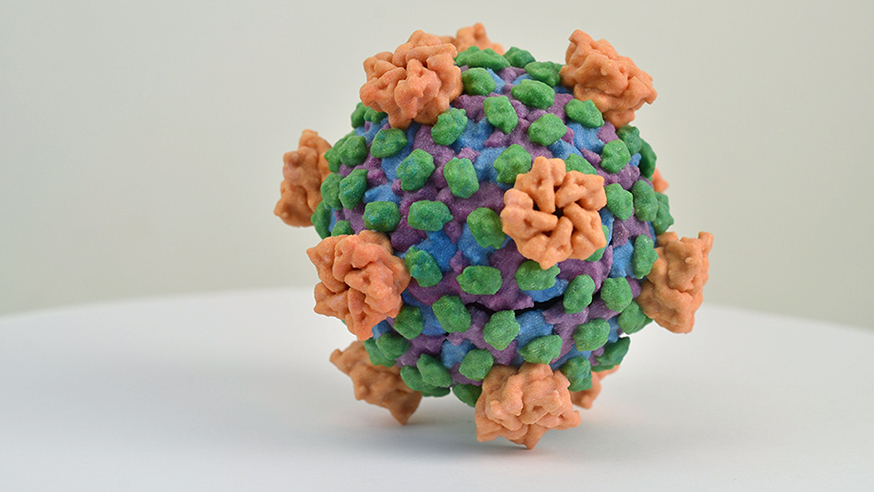
A 3D print of a type of reovirus called rotavirus. In the study, Professor Melcher and colleagues used clinical grade oncolytic orthoreovirus (photo: NIAID CC-BY-2.0)
Viruses cause some of the world’s deadliest diseases. We hear a lot about the nastiest in the news — HIV, Ebola, Zika… but what if there were types of virus that could be used to actually treat disease? To fight off other viruses, or even cure cancer?
What if I told you there were viruses that might be able to do both?
Bad viruses
Scientists have been looking for new ways to treat the most common primary liver cancer type, hepatocellular carcinoma, which is deadly if it can’t be removed by surgery. These cancers are caused by hepatitis viruses, mainly HepB and HepC, which account for 54% and 31% of cases, respectively.
In order to give the patient the best shot at a cure, doctors need to get rid of both the virus and the tumour. If they treat the cancer and not the virus, the virus could go on to cause another tumour.
Patients should first be given antivirals to treat the hepatitis infection and then chemotherapy for the tumour — but antivirals are too expensive for poorer countries where the disease is most common, and even when they are available patients often don’t complete the full course so the treatment doesn’t work.
Good viruses
New research by Professor Alan Melcher, Professor of Translational Immunotherapy at The Institute of Cancer Research, London, and colleagues at the University of Leeds used a virus called reovirus to spring the immune system into action against both hepatitis viruses and liver cancer cells. The reovirus treatment killed both the virus and the cancer, and without damaging healthy tissue in the rest of the body.
Reoviruses are a family of viruses that cause mild tummy bugs and coughs in children. Adults don’t normally get reovirus infections because they build up immunity from childhood.
But when cells become cancerous they are ‘rewired’ in a way that means some of their viral defences are shut down. So reovirus will be able to infect cancer cells, but leave healthy cells alone.
Once reovirus is inside the cancer cell, it will produce more virus and burst the cancer cell from within. But that’s not the most effective part of the attack.
Using the immune system
Reovirus also kicks the immune system into action. Our immune systems aren’t very good at ‘seeing’ cancers — partly because cancer cells look like our body’s own cells, partly because cancers are good at telling immune cells to turn a blind eye. But the immune system is very good at seeing viruses, so cancer cells infected with reovirus become visible to the immune system and can be sought out and destroyed.
Looking at mice and samples taken from patients, the researchers found that cancer cells infected with reovirus began to mount their own in-built or ‘innate’ immune response against reovirus and the hepatitis C virus that caused the cancer — producing proteins called interferons that attract the body’s immune cells to the tumour site.
Not just liver cancer
Professor Melcher, who co-led the study, told me: “Our study establishes a potential new type of viral immunotherapy for the most common primary liver cancer type, and is the first to show you can use one virus to treat cancer and the virus that caused it, in one fell swoop. The next step is to see if it will work in humans, and we hope to begin first-in-human clinical trials in the near future.
“Some early data we’ve collected suggests reovirus therapy could also be used to treat a range of other cancer types that are also driven by a viral infection, including Epstein-Barr virus-associated lymphoma — but more work needs to be done.”
Virus wars of the future
The first virus was approved for use on the NHS as a treatment for melanoma in September 2016. But with increased momentum in this field of research, we are likely to see more and more good viruses deployed to fight cancers and the bad viruses that cause them.
comments powered by